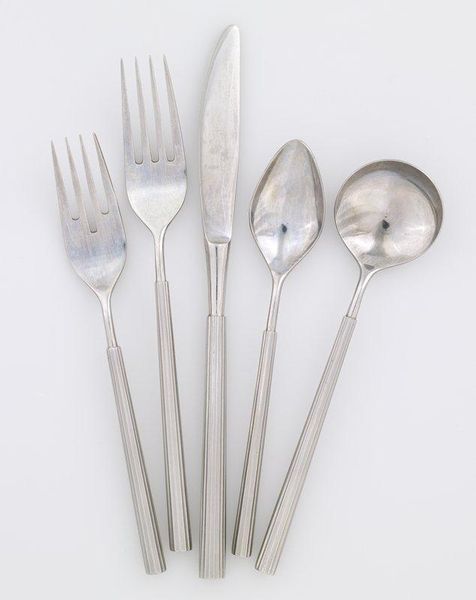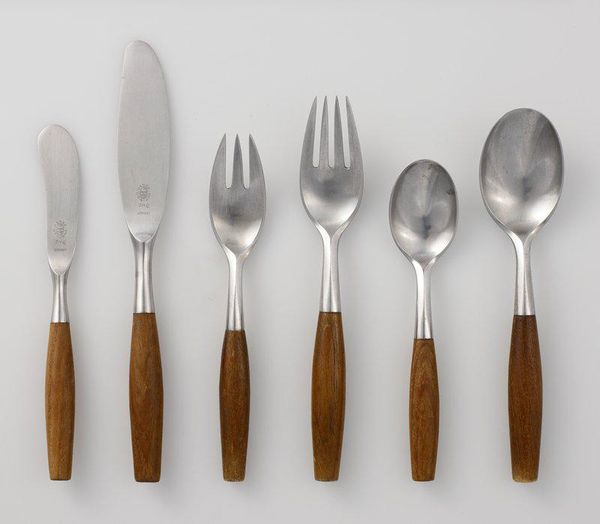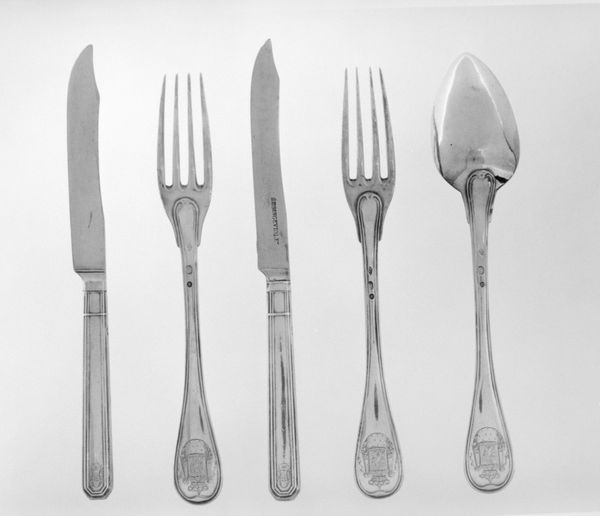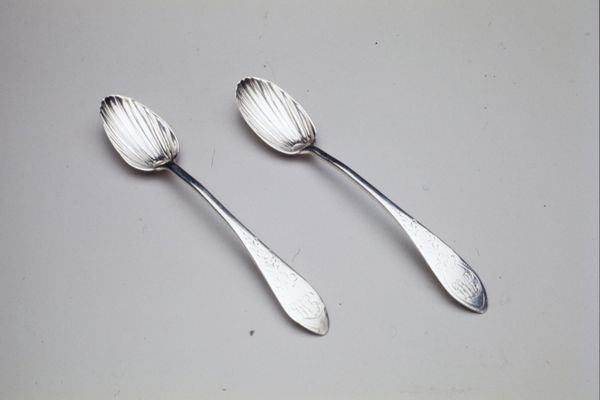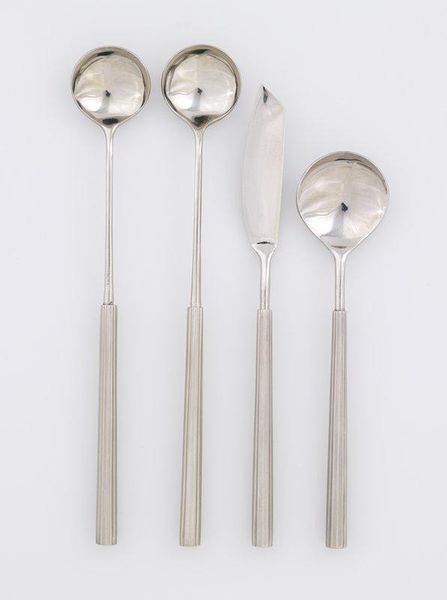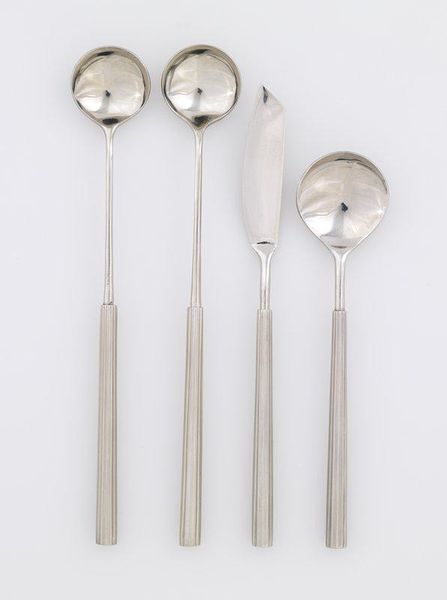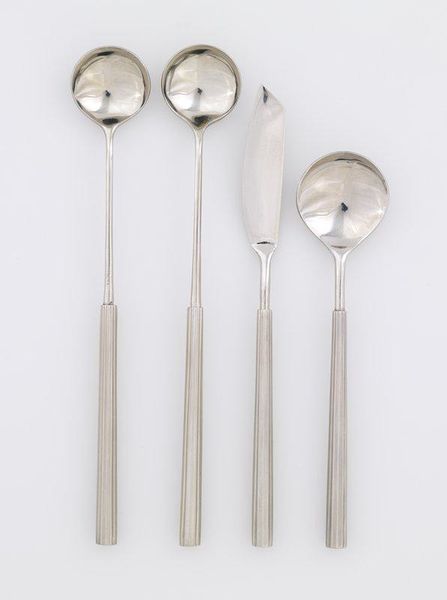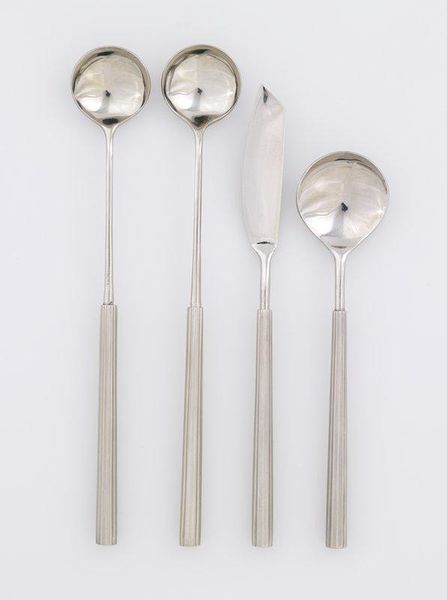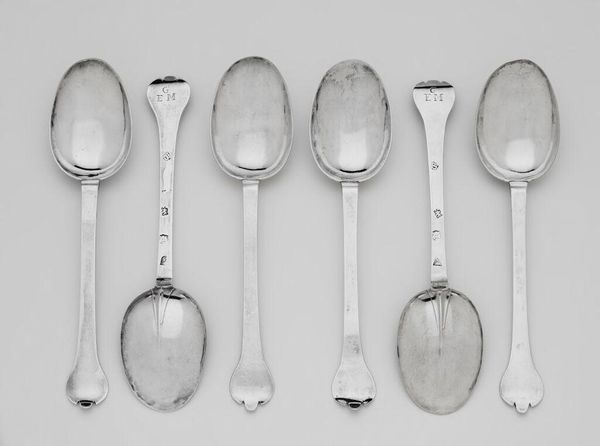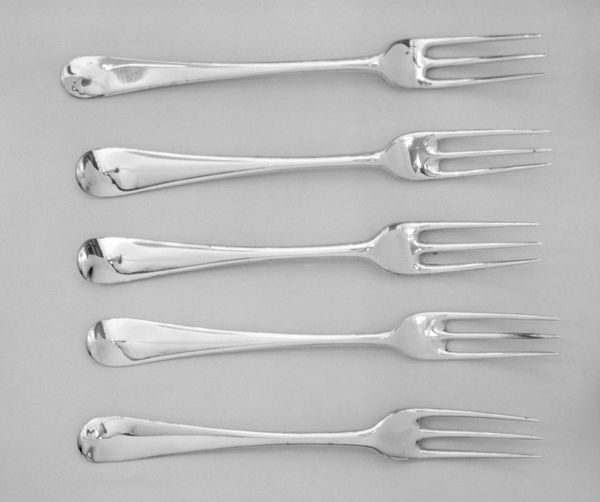
silver, metal, photography
#
silver
#
metal
#
photography
#
stoneware
#
geometric
#
food art
#
food photography
Dimensions: 8 15/16 x 5/8 in. (22.7 x 1.59 cm)
Copyright: No Known Copyright
Curator: Here we have Marion Weeber's "Dinner knife," created sometime between 1965 and 1970, using silver and metal. Editor: These utensils, gleaming and almost architectural, remind me of a minimalist sculpture. What can you tell me about them? Curator: Well, first, let's consider the context. The mid-20th century witnessed a fascinating shift in attitudes towards craft and design. Silverware, typically associated with domesticity and often dismissed as mere utility, becomes elevated here. Weeber's choice of materials - the reflective, precious nature of silver juxtaposed with the industrial potential of metal – asks us to consider the labor involved in its creation. What kind of skill and technology would be needed? Editor: So it's not just about the finished product, but also about the process? Curator: Precisely. Think about the social context. Post-war America, mass production… Where do handcrafted items like this fit in? Is it a rebellion against standardization? A luxury commodity for the elite? The choice of silver signals a certain economic status, but the streamlined design suggests a rejection of ostentation. What do you think about that contradiction? Editor: It makes me wonder about who these utensils were actually for, were they used or just displayed? It is a very interesting tension. Curator: Exactly. Examining art through its materials and production can reveal a great deal about the culture that produced it. Considering the labor, materials, and implied consumption connected with seemingly simple objects allows us a new way to appreciate them. Editor: I see now how even something as everyday as cutlery can reflect larger social and economic forces. Thank you, I will never look at my silverware the same way again!
Comments
minneapolisinstituteofart almost 2 years ago
⋮
Marion Weeber was an independent American industrial designer who attended the progressive art school run by the Art Students League of New York. She worked for several prestigious firms including Cartier, Ekco, and Samuel Kirk & Son, but eventually opened her own design firm in Manhattan in 1939. She holds over twenty-five patents for her innovative and inventive designs. "Classic Column" is perhaps the most storied of Weeber's fifty-plus flatware designs. It was selected by the U.S. Commission for Design Excellence for the American Pavilion at the 1967 International and Universal Exposition in Montreal. Precise and polished geometric forms reflect an American industrial aesthetic, exemplifying the forward-looking image the United States wished to present to the world.
Join the conversation
Join millions of artists and users on Artera today and experience the ultimate creative platform.
